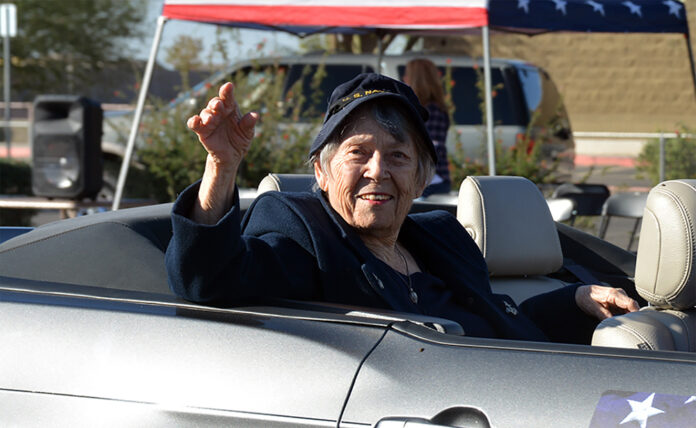
At War: Fresh-faced WAVES recruit did her part
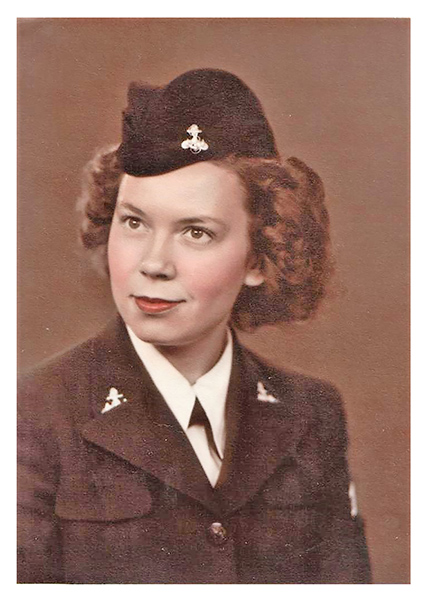
After the United States declared war on Japan in 1941, Mary Francis Holmes Abrahams was just 16. Three years later she talked her girlfriends into joining her in serving their country by signing up for the U.S. Navy WAVES.
They all lived in landlocked Wichita, Kansas. They were all just old enough to sign up – all except Holmes herself, who was still only 19. So, she had to put her enthusiasm on hold for a year before she could qualify for the new Women Accepted for Volunteer Emergency Service in 1945.
“I loved the Navy,” Abrahams said. “We were a whole gang of people. We traveled all over the States and got to know so many people.”
Now 95, she lives part-time in Maricopa. The World War II veteran was a grand marshal in the 2018 parade and will be back this year in her WAVES uniform.
“It doesn’t quite fit the same,” she said.
Formed by the Franklin D. Roosevelt administration in 1942, WAVES gave women a chance to serve at enlisted and officer levels. One of its recruitment lines was “Release a man to fight at sea.” That, in fact, was its main function, to fill noncombat duties with women so the Navy’s men could be used in combat.
WAVES duties ranged from healthcare to parachute rigger to gunner’s mate. Abrahams was trained in communication. Boot Camp was at Hunter College in New York.
Her teletype training was in Washington, D.C., and she was stationed at a relay station in San Francisco as a 3rd class petty officer.
“It was a great time,” she said.
Base pay was $78 per month. Her work was comprised of re-routing ticker-tape messages.
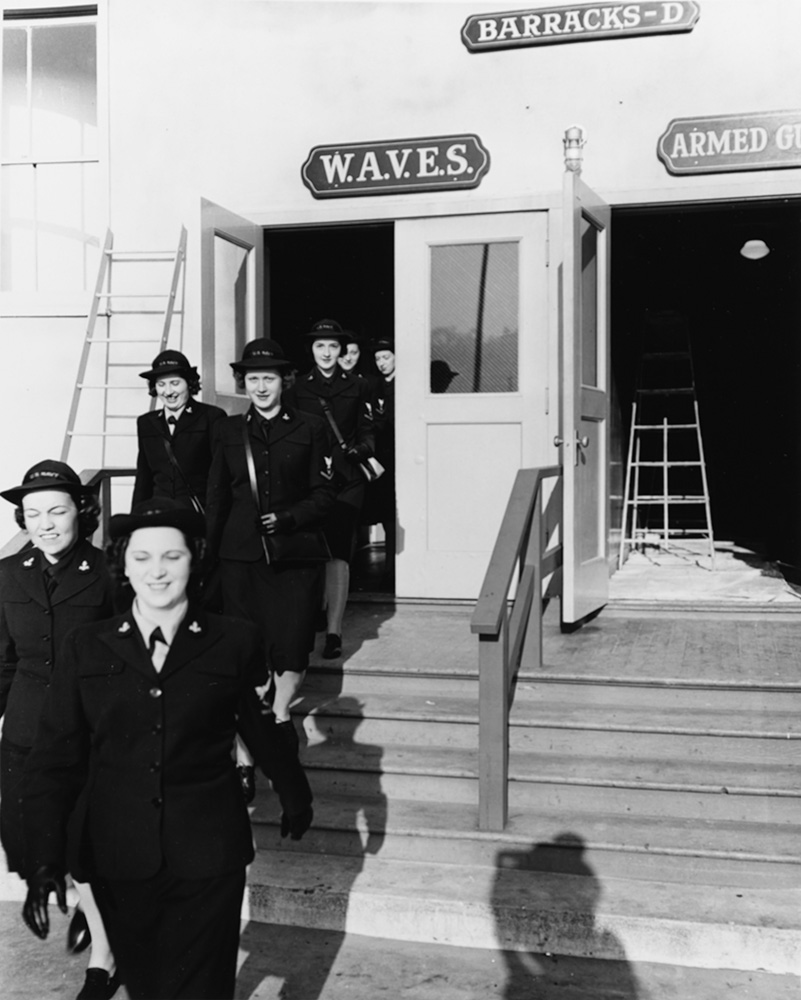
“She had a lot of wonderful experiences,” said her daughter Barbara Adamson of Maricopa, “including the celebrations of V-J Day.”
After the war, at the end of 1945, she married Technician 4th Grade Albert Raymond Abrahams, who was in the U.S. Army’s 3rd Medical Battalion and nine years older.
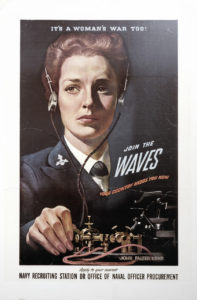
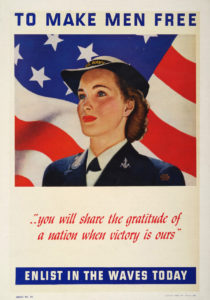 The couple settled in Arizona, a state Mary Fran had frequented as a child visiting relatives. Her military service paid for her education, and she received her master’s degree from Arizona State University. Three years after marrying, she and Albert started a family, which would eventually include four children.
The couple settled in Arizona, a state Mary Fran had frequented as a child visiting relatives. Her military service paid for her education, and she received her master’s degree from Arizona State University. Three years after marrying, she and Albert started a family, which would eventually include four children.
When the youngest was in school, Abrahams decided to go back to work.
“I took a job in the Tempe School District as a PE teacher,” she said. “I taught there until I retired.”
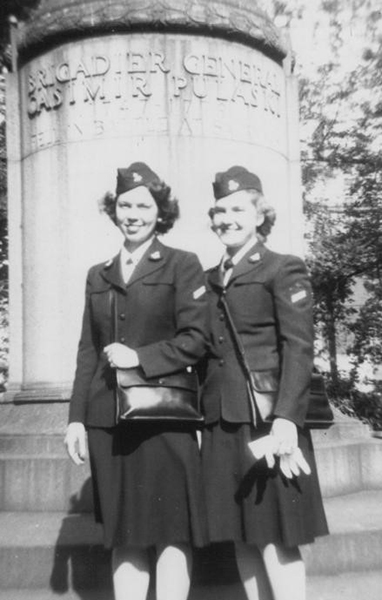
Daughter Karen Moses, with whom Abrahams lives part-time in Ahwatukee, said her mother was always something of a tomboy and loved sports and teaching sports.
“She played about every sport,” she said. “She even played in a national tourney in basketball for Kansas.”
The military service of their parents did not come up much in family conversations.
“Dad would say, ‘It was something that we felt had to be done,’” Adamson said. “But then we found this box of letters.”
That gave the children a fuller understanding of their WWII experience, as they had frequently corresponded during the last year of the war.
When the American Legion Veterans Day Parade organizers signed her up to ride in a seat of honor last year, Mary Fran Abrahams was grateful for the opportunity.
“It was fun,” she said. “I would wave at everybody.”
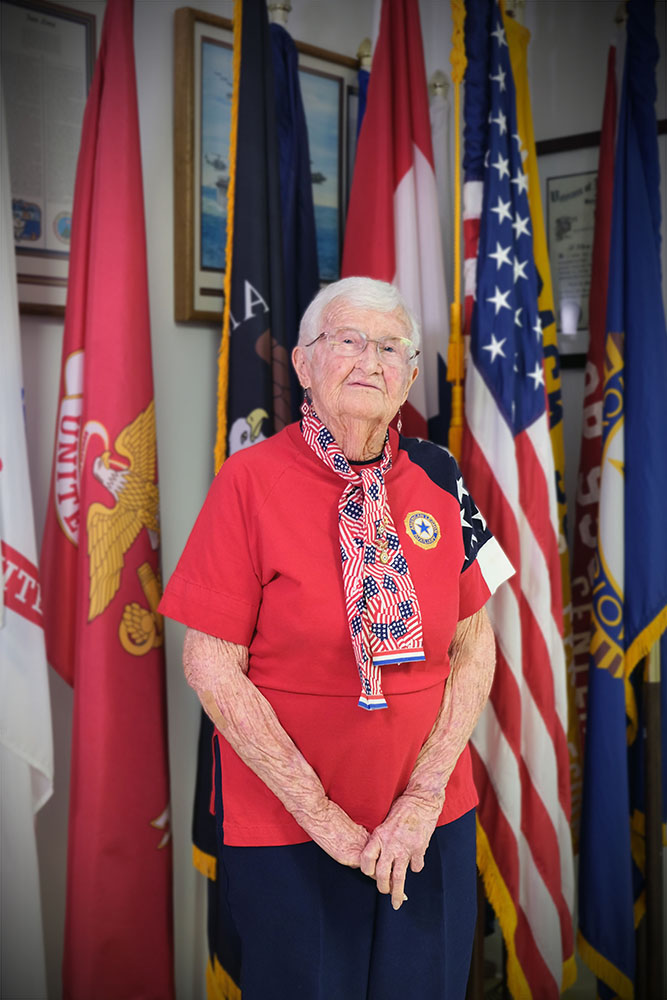
On the Homefront: Oldest auxiliary member helps plan parade
Caroline Mill was already married when the United States entered World War II.
“I married young before he went into the service,” said Mill, now at 98 the oldest member of the American Legion Auxiliary of Post 133 in Maricopa.
The post is planning the third annual Veterans Day Parade, and Mill loves to see a crowd for the local veterans.
“We need more people to come out and give support,” she said.
Mill sustained two veterans in her own way. While her first husband, Virgil Bradbury, joined the U.S. Army, Caroline was a teacher. She finished out the school year before moving with friends near his training camp.
“I never was sorry,” she said. “It was the thing for me to do. It’s the way things were.”
When Virgil was sent into combat in Europe, Caroline described it as “terrible.” She stayed with family for the duration. Virgil participated in the D-Day invasion of France. He was also captured by the Germans.
“He was prisoner of war for Germany, but the camp was in Austria,” she said. “As the war went on the sergeants from Russia came and killed the guards, so they were loose. They could go where they wanted but they couldn’t go back to Germany. So, they walked all the way across Austria, all the way to Russia. When they got there, they wouldn’t let them walk. They put them on a railcar and took them to a ship and sent him home.”
While he was a POW, Caroline received cards from him: “There wasn’t much to write, and they wouldn’t dare to write it anyway.”
When he came home, however, his health was never the same. They moved from Iowa to buy a farm in Wisconsin with a VA loan. They took in two foster daughters. But Virgil was ailing.
“He died fairly young because he had leukemia,” Caroline said. “We always kind of thought it was because he was in prison camp and all they had to eat was cabbage soup. He wasn’t real healthy when he came back.”
Two years after he died, Caroline married Robert Mill, who was also a veteran of D-Day and had been a cook in the service. He brought two daughters into the marriage.
“They are both real good to me,” Caroline said.
She joined the Veterans of Foreign Wars Women’s Auxiliary in Wisconsin and later joined the American Legion and stayed with the organization when they moved to Casa Grande. For 10 years, until she stopped driving, she volunteered at Oasis Pavilion caring for elderly less elderly than she.
A lifelong Packers fan, Mill maintains an independent spirit. She was among Legion Auxiliary members who jumped ship from the Casa Grande post to join the women at the Maricopa post. The Maricopa Veterans Day Parade has been a growing venture for the auxiliary.
“I want to see people that are patriotic,” Caroline Mill said. “That’s what we need in this country. The way the country is, we need more people who are patriotic and loyal to their country.”
This story appears in the November issue of InMaricopa.

![3 things to know about the new city budget Vice Mayor Amber Liermann and Councilmember Eric Goettl review parts of the city's 2024 operational budget with Mayor Nancy Smith on April 24, 2024. [Monica D. Spencer]](https://www.inmaricopa.com/wp-content/uploads/2024/04/spencer-042424-preliminary-budget-meeting-web-218x150.jpg)




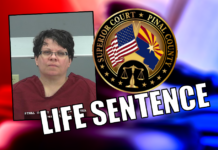
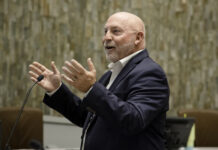
![MHS G.O.A.T. a ‘rookie sleeper’ in NFL draft Arizona Wildcats wide receiver Jacob Cowing speaks to the press after a practice Aug. 11, 2023. [Bryan Mordt]](https://www.inmaricopa.com/wp-content/uploads/2024/04/cowing-overlay-3-218x150.png)



![Alleged car thief released without charges Phoenix police stop a stolen vehicle on April 20, 2024. [Facebook]](https://www.inmaricopa.com/wp-content/uploads/2024/04/IMG_5040-218x150.jpg)

![3 things to know about the new city budget Vice Mayor Amber Liermann and Councilmember Eric Goettl review parts of the city's 2024 operational budget with Mayor Nancy Smith on April 24, 2024. [Monica D. Spencer]](https://www.inmaricopa.com/wp-content/uploads/2024/04/spencer-042424-preliminary-budget-meeting-web-100x70.jpg)


